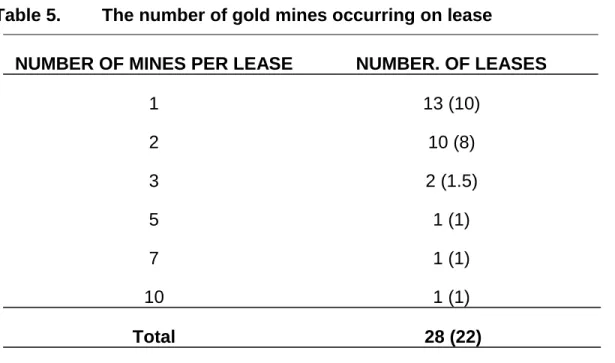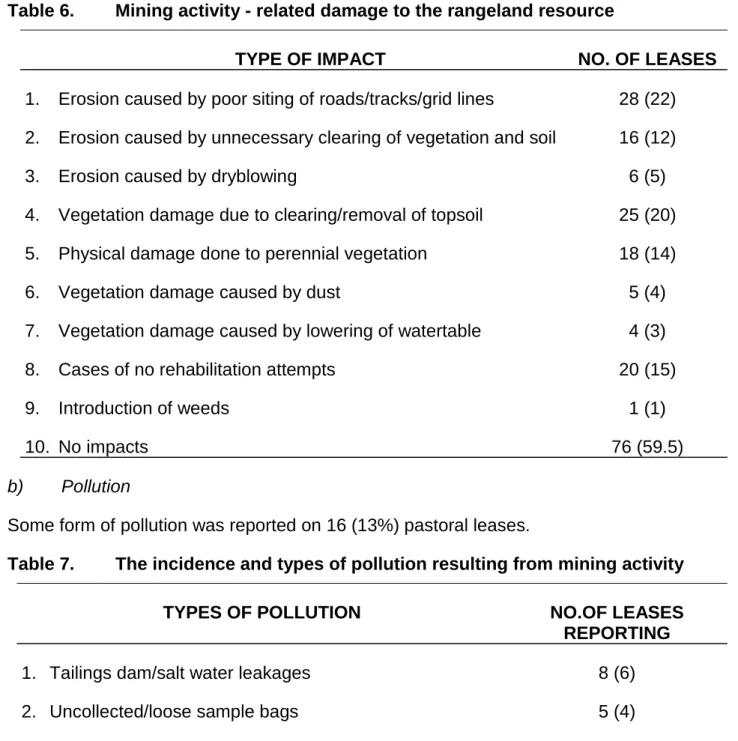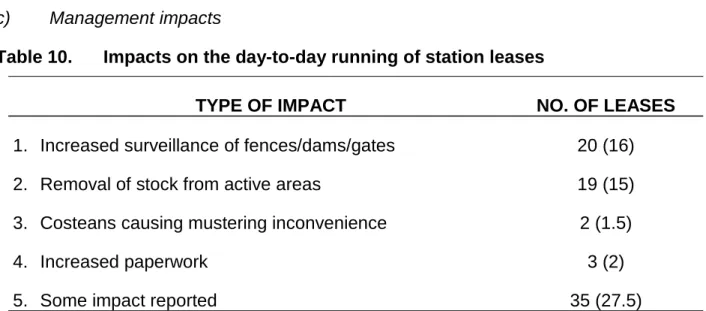Circumstances may change over time and conclusions should be interpreted in the light of the most recent.
Summary And General Recommendations
The establishment of an environmental unit in the Mining Department, the increase of environmental awareness in the mining industry, the provisions for compensation in recent legislation and the development of cooperation and goodwill between the two industries should ensure that conflict is avoided and equitable shared land use can be made. achieved. It is recommended that all sectors of the mining industry involve themselves in local Land Conservation Districts. It is recommended that a standard procedure be formulated for evaluating the impact of mining activities on the resale value of pastoral leases.
The Department of Mines, the Department of Agriculture, representatives from the mining and pastoral industries and qualified assessors should be involved in the formulation of the procedure.
Introduction
Aims
Previous Studies on Mining Impacts in the Semi-arid Rangelands
In all cases, equipment and trash must be removed or buried upon completion of exploration and mining operations. j) In the Mining Department of the Ministry of Mining, an environmental management unit should be established to formulate environmental objectives, evaluate environmental proposals submitted by operators, supervise the implementation of approved proposals and enforce the environmental provisions of the Mining Act. k) Homeowners not subject to State Agreements should submit written environmental proposals detailing the nature of any major surface interventions to be undertaken and planned remedial measures. Since the publication of the Task Force Report in 1985, an Environmental Management Unit has been established within the Department of Mines' Division of Mines. This unit located an environmental officer in each of the East Goldfields, Pilbara and Perth.
As a further response to the task force's report, the Mining Engineering Division of the Department of Mines issued "Guidelines for Environmental Management of Mining in Arid Areas" in May 1988.
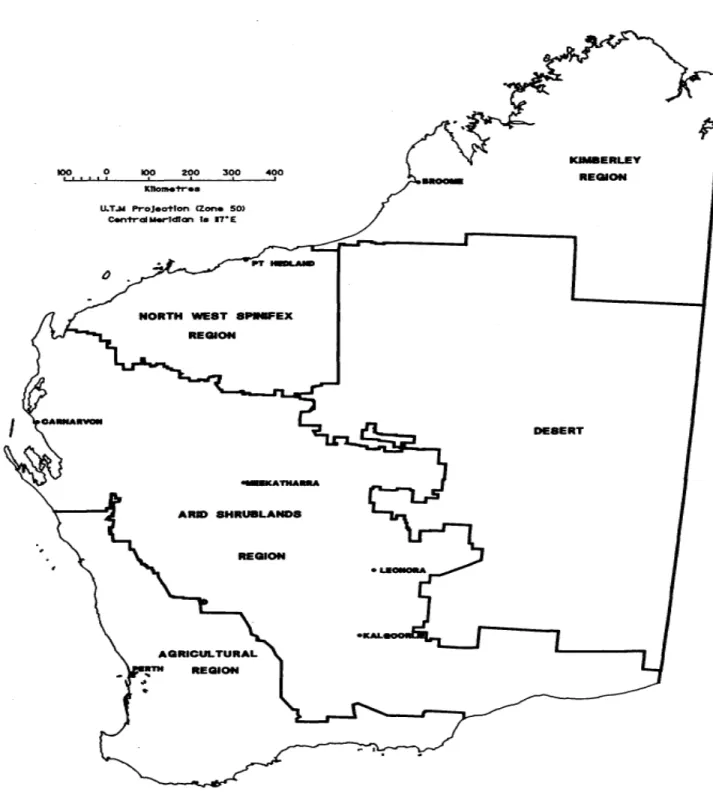
The Pastoral Industry’s Response to Mining and Mining Exploration
They are members of many County Land Conservation Committees in pastoral areas where mining and mining exploration is an important land use. These guidelines state that “for mining in semi-arid or arid environments, the most realistic credible short-term goal is to establish an erosion-resistant ground cover. Exploration Guidelines for Field Personnel (1988) was published by the Western Australian Chamber of Mines (Inc.) and widely distributed within the mining and pastoral industries.
This technical report was prepared in response to that request and describes the impact that mining and mining exploration have on the variety of resources and pastoral pursuits in the pastoral areas south of the Kimberley.
Historical Perspective
The Physical Environment
- The North-western Spinifex Region
- The Shrubland Region - Gascoyne, Murchison, Goldfields and Nullarbor
- Mining Tenement and Pastoral Lease Areas
- Questionnaire to all Pastoralists
- Individual Property Visits
Dry bush lands lie south of 23°S latitude and east of the area used for crop production in the South West Land Division. The dominant physical features are the coastal plains of the Carnarvon Basin, the river basins of the Gascoyne, Wooramel, Murchison and Greenough rivers, the greenstone belts and paleodrainages of the East and North East Goldfields and. Tree growth is absent on all but the western and southern edges of the Nullarbor Plain.
The shrub layer in these areas is long-lived and an important element of. Normally, both minerals are associated with Archaic greenstones that occur as belts aligned approximately N-S in the Murchison and Eastern Godfields. To discuss the mining effects in pastoral areas, quantitative data on the distribution of both land uses was sought.
There are significant areas under both mining leases and pastoral leases which are not currently being used for the purposes for which they are classified. A questionnaire (Appendix 2) was sent to each pastoral station tenant in the Goldfields, Murchison and Pilbara regions. In addition, they were asked to estimate the mining activity by categorizing the area affected by the mining activities on their property into one of three broad categories: Extensive (> 100 ha), Minor (10 ha) and Nil.
They were also asked whether they had been informed of the mining companies' presence, whether they had succeeded in solving any problems caused by mining activities and how the existing arrangements to allow multiple use of grazing land could be improved. In the hope that the full range of mining activities and impacts would be observed, the selected properties were those that indicated a greater than average level of mining activity.
Results
Mining Tenement and Pastoral Lease Areas
However, the potential for agricultural conflict is evident from these figures because more than half of the shire areas comprise the deserts of central Western Australia, where there is no pastoralism and little mining, the full meaning of the confluence of mining leases and pastoral leases. is blurred. Practically the whole of the shire is under pastoral leases, and half the area is also under mining leases.
Results from Questionnaires
Twenty-three (18%) leases reported one or more of the types of infrastructure damage listed below. Impact on livestock production or carrying capacity of the lease Thirty leaseholders reported some impact on their stock. A direct impact on the rangeland resource in terms of soil erosion or loss of vegetation was the most commonly reported impact, with 53 (41%) reporting some form of erosion or damage to vegetation caused by the mining activity.
35 (27%) tenants reported that the presence of mining activities had affected the management of their property in one or more ways, while 10 (8%) specifically stated that mining activities had not affected their leases. Only one station reported that there had been attempts to rehabilitate mine sites by a mining company involved at their station, while approximately half reported some beneficial inputs from mining operations.
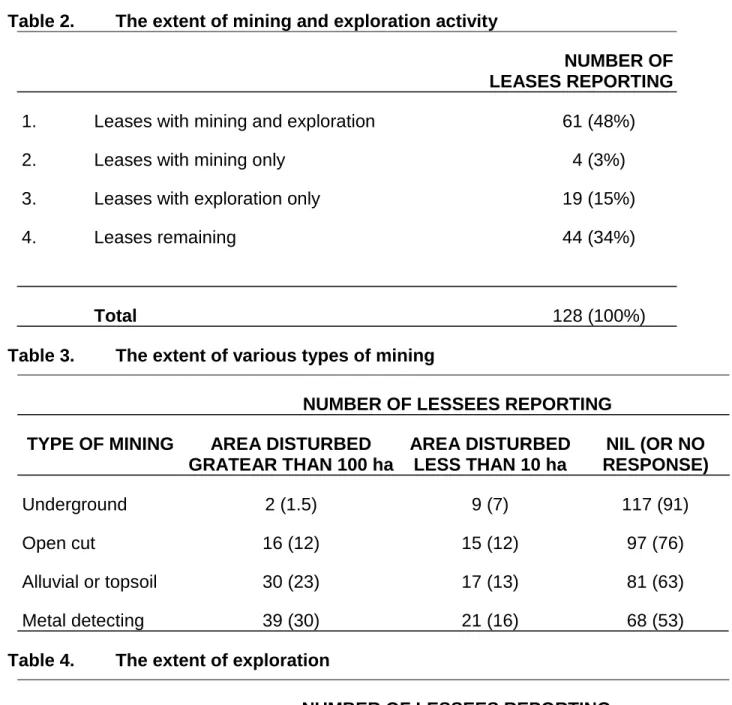
Case Studies of Property Visits
The pastoralist also reported that mining access tracks now provide access to previously inaccessible areas of his property, while new airstrips and campsites are useful during mustering. The pastoralist noted that some land is double assessed as both he and mine tenants pay rent on the same land. The pastoralist appeared to be unimpressed by the mining operators on his lease, although he acknowledged that many of the problems were present before he was given the lease for the block where the mining operation is located.
The pastoralist claimed that a combination of intense mine traffic and damage to fences, gratings and gates had made these. A concern raised by the pastoralist on this property was that dust raised from roads and mining sites would lead to dust contamination of the fleece and may reduce returns from his wool pinch. The priest stated that the Department of Mines could not process all his complaints and he had had to accommodate several violations of the Mining Act.
Part of the compensation has been paid for the loss of pastures, however negotiations between livestock and mining concerns are ongoing. Pastorist noted that the large number of mine operators involved made it difficult to apportion blame or responsibility for the negative effects on his station's business among the mine operators. The pastoralist is currently suing a mining company for compensation for lost revenue due to its mining operations.
Although 200 ha has been lost due to the development of the opencast mine in the reserve, the rancher is not entitled to compensation under the terms of the grazing lease contract. The livestock farmer was concerned about damage to station tracks by mining vehicles in wet weather, but the mining company involved has offered to remedy this situation by constructing a bitumen fenced road that will go to the livestock farmer.
Discussion
- Survey Representativeness
- Incidence and Extent of Mining Activity and its Impacts
- Guidelines for the Rehabilitation of Mined Areas
- Firearms and Dogs
- The Role of Land Conservation Districts
There has been a growing environmental awareness within the mining industry and an Environmental Management Unit has been set up in the Department of Mines. They are also concerned by the additional costs they incur as a result of the presence of mining activity on their leases. Soil systems have not yet been described for the Eastern Goldfields and Eastern Pilbara, however it is common for mining activity to occur even on the best types of pasture in these districts.
Pollutant releases from the mine have been reported less frequently. i) Disturbance of vegetation and surface soil. When cryptogamic crusts dry out, they tend to create cracks on the soil surface that provide ideal niches for seed germination. Soil, cryptogamic crust, and vegetation conditions are highly interdependent, and disturbances in one are likely to result in destabilization and degradation of the others.
In the harsh mulga wash plains of Western Australia's dry bushlands, such conditions prevail over large areas. Higher flow rates thus cause erosion in the form of scour, which is of particular importance in these areas. This problem should be solved quickly, to the satisfaction of the pastoral and mining industries.
In some cases, the committees include representatives from the mining industry and the Ministry of Mines. The "Report on Conservation and Restoration in the Gold Mining Industry" (WPCRMI, 1985) made the following recommendation.
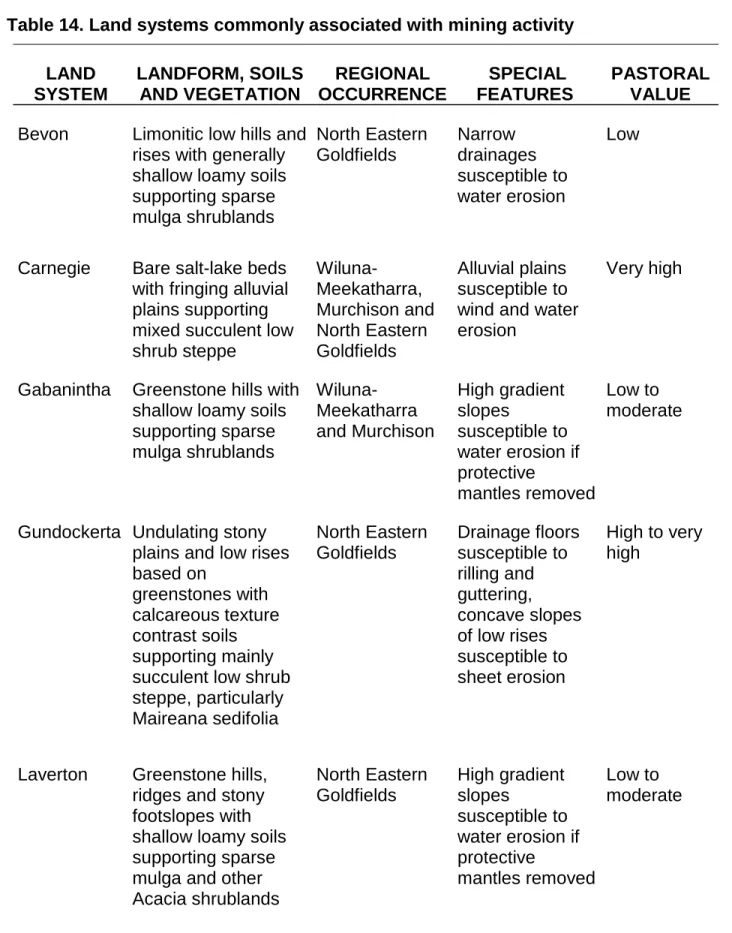
Impact of oil exploration activities on area resources and pastoralism in the West Kimberley. Inventory and condition review of Roebourne Plains and surrounds, Pilbara District, Western Australia. Recommendations of the North East Goldfields District Soil Conservation Advisory Committee on Mining in Pastoral Areas.
The lessee shall, prior to commencing any prospecting or mining on the lease, notify the owner/occupant of land being used for pastoral purposes. Furthermore, the tenant must advise. owner/occupant of significant changes to the original notification throughout the duration of the operation. In the case of alluvial mining, the leaseholder must restore the former productivity of the land through careful planning of the operation, recovery and return of topsoil, contour demolition, erosion control, replanting with suitable species and fencing to protect rehabilitated areas.
All work shall be completed to the satisfaction of the Regional Mining Engineer or his designee. This is taken from the "Report on Conservation and Rehabilitation in the Gold Mining Industry". Unless the written approval of the Mining Engineer or District Environmental Officer is first obtained, the use of scrapers, graders, bulldozers, backhoes or other mechanized equipment for surface clearing or suit excavation is prohibited.
The owner of the tenement is not permitted to drive on roads not published on Pastoral properties without the prior consent of the owner/occupant of such land. The applicant provides a map to the owner/resident of the land for which the application is made, showing the location of the tenement in relation to the nearest trig point or fixed improvement.
Questionnaire sent to pastoralists
